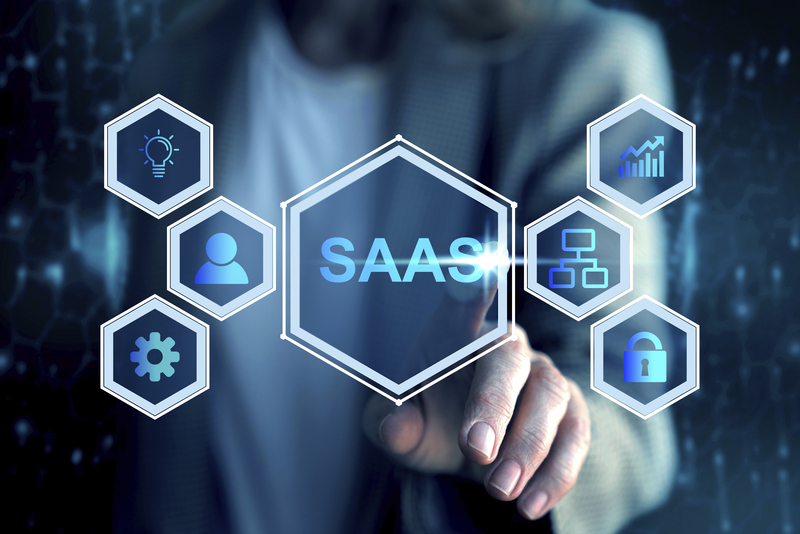After understanding the operating principles of cloud technology, it’s time to understand the three major cloud services: SaaS, IaaS, and PaaS. In this article, we will help you understand what SaaS is in detail and show you the differences between SaaS, IaaS, and PaaS for you to understand the advantages and applied products and services of SaaS at the same time.
.jpg)
SaaS is the acronym for Software as a Service. It is a cloud software delivery mode referring to using software (or product) as a service. Simply put, it is the software developed, maintained, and updated by cloud providers. By purchasing software licenses with the pay-as-you-go system, users can access the SaaS applications supported by the cloud anywhere over the internet. These applications include Microsoft 365, Google Gmail, and others. Through cloud software subscription, users will not need to develop own software or purchase single-use software, which reduces the IT operating cost of businesses.
SaaS brings the following three benefits to business users.
More flexible software pricing: No need to invest in a large amount of software; only need to pay for the required capacity and number of users monthly.
Faster software update and maintenance: No need to update each PC and solve compatibility problems using IT staff; only need to connect to the internet for software update to access the newest functions.
More convenient cross-platform data access: Only need to connect to the internet, whether on mobile, PC, or tablet, to access the required data by opening the webpage.
What are the differences between these three cloud services: SaaS (software as a service), IaaS (infrastructure as a service), and Paas (platform as a service)? They are different because of the co-location cloud computing services offered by third-party cloud service providers. Next, let’s see the service contents of IaaS and PaaS.
PaaS is the acronym for Platform as a Service. It refers to the hardware and software resources required for application development offered by cloud service providers to support the complete life cycle of applications from initial development and deployment to testing, management, and updating. Business users do not need to share the burden of the management and updating of operating systems and resources, or spend energy on hardware maintenance. These resources include infrastructure, development tools, and operating system.
IaaS is the acronym of Infrastructure as a Service. It refers to the servers, storage space, and computing resources that business users rent from cloud suppliers. That is, business users can deploy and run operating systems, the internet connection environment, storage hardware, or configure the system required by applications at random according to their actual needs to tailor the required environments and architecture without maintaining or updating their own data center infrastructure.
Microsoft 365 is a cloud-powered productivity service. Its simplified cloud computer setup, deployment, and management enable business to quickly build the required business operation environment, help each employee focus more on their own work, and meet constantly changing employee needs.
By downloading installing Citrix Workspace on a PC, Mac, or smartphone and logging in to a user account, users can access all related SaaS services and web applications at any time. Citrix Workspace integrates mobile device control, secure remote access and file sharing for users to visit the applications, desktop, or documents of the business across platforms.
Based on the concept of an AI assistant, UiPath RPA offers robotic process automation (RPA) to help businesses manage unimportant services by rendering low-performance and low-yield tasks to AI, e.g., stock management, CV screening, invoice processing, email sorting, for employees to focus time and productivity on work of higher value.
Whether it is at home, having a meeting elsewhere, or in the office, SecurID offers multiple authentication channels to mobile workers with one-time password. Based on user preferences and organizational needs, businesses can choose the appropriate OTP authentication to ensure high security.
With open data collection, honeypot, and threat intelligence integration, SecurityScorecard helps businesses check the level of information security risk and monitor the state of organizational information security through non-invasive data collection. SecurityScorecard can detect 10 major information security risks, including analyzing the risk of network, DNS, vulnerability patch, endpoint, malware, application, Cubit Score, hacker intelligence, account breach, and social engineering platform, with extensive coverage.
The SaaS cloud services from MetaAge help businesses find solutions to accelerate organizational digital transformation and innovation. Whether it is software or service for increasing productivity, AI for enhancing work efficiency, or information security protection, we offer highly-customized SaaS services based on the needs of customers to provide them with the best cloud solutions! Reach us now through Online Inquiry and Contact Us, your needs will be addressed in detail by dedicated MetaAge staff.